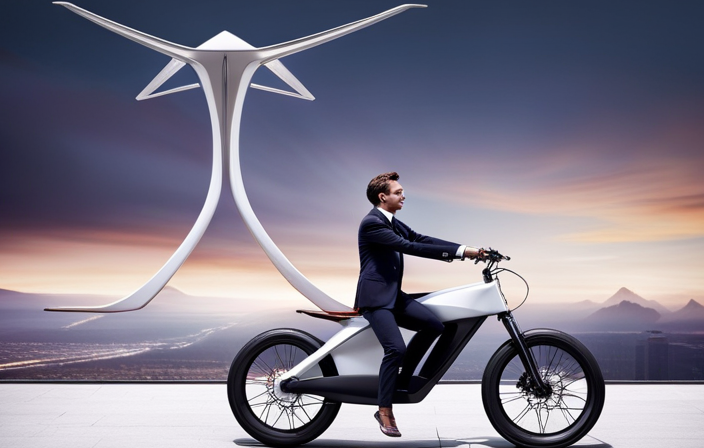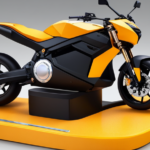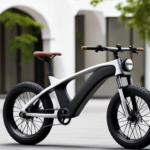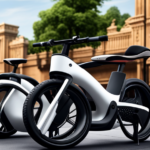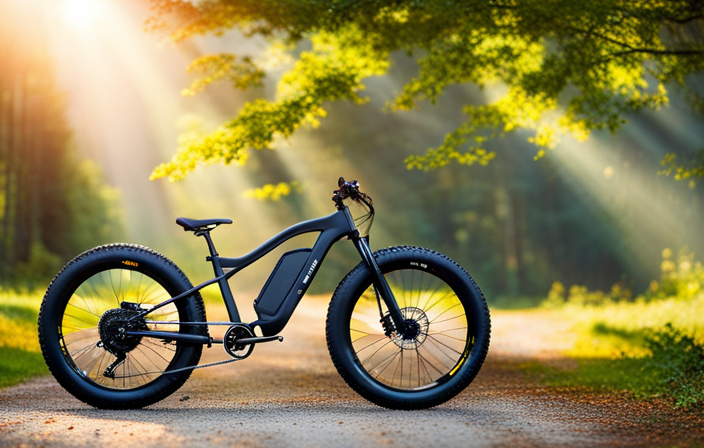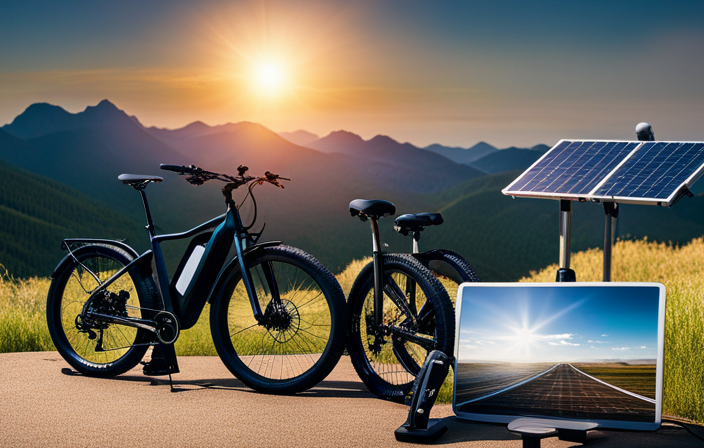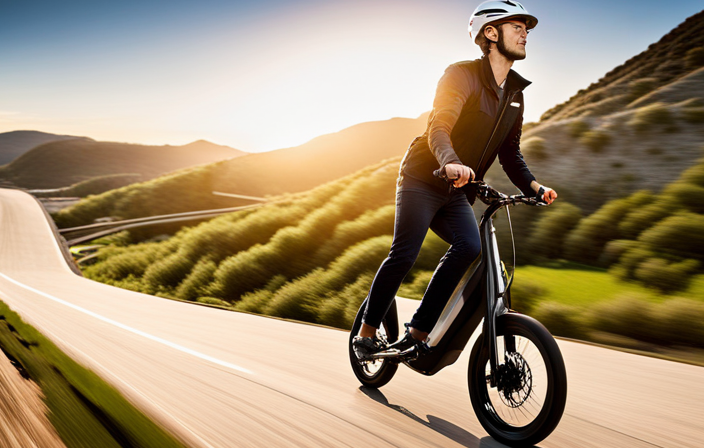What is the weight of an electric bike?
If you’re in the market for an electric bike, understanding its weight is crucial. The weight of an electric bike can significantly impact its performance, maneuverability, and overall experience.
In this article, we will delve into the factors that contribute to electric bike weight, the average weight range you can expect, and the benefits and considerations of lighter and heavier electric bikes.
So, let’s dive in and find the perfect balance of weight and functionality for your electric bike.
Key Takeaways
- Factors affecting electric bike weight include the type of components and additional features like rear rack, fenders, lights, suspension fork, and larger battery.
- When adding accessories, it is important to evaluate functionality and convenience, and weigh the added benefits against potential weight increase.
- Strategies for reducing electric bike weight include upgrading to lightweight components, choosing a carbon fiber frame for strength and lightness, and opting for a mid-drive motor for weight reduction and efficiency.
- The perfect balance of weight and functionality should be considered when choosing an electric bike, taking into account factors such as weight, functionality, and specific requirements.
Understanding the Importance of Electric Bike Weight
Understanding the importance of electric bike weight is crucial when considering factors that affect performance. Electric bike weight has a direct impact on its overall performance, particularly in terms of speed, acceleration, and maneuverability. The heavier the bike, the more effort it takes to ride, resulting in decreased performance.
Additionally, electric bike weight also affects the battery life. A heavier bike requires more power to propel, which drains the battery faster and reduces the range. Therefore, choosing an electric bike with a lighter weight can significantly improve both performance and battery life.
In the subsequent section about factors that contribute to electric bike weight, we will explore other aspects that play a role in determining the overall weight of an electric bike.
Factors that Contribute to Electric Bike Weight
Factors that contribute to the weight of an e-bike include the battery, motor, frame, and additional components. The weight of these elements can greatly impact the overall performance and efficiency of the bike.
Here are the key factors that contribute to the weight of an electric bike:
-
Battery: Electric bikes are powered by a battery, which can be one of the heaviest components. The capacity and type of battery used can greatly impact the weight of the bike.
-
Motor: The motor is responsible for providing assistance and power to the bike. Motors can vary in size and power output, affecting the weight of the bike.
-
Frame and Components: The frame and other components, such as the suspension, brakes, and gears, also contribute to the weight. The material used for the frame, such as aluminum or carbon fiber, can impact the overall weight of the bike.
The weight of an electric bike is important as it can affect the bike’s performance, maneuverability, and battery life. Understanding these factors can help you choose an e-bike that suits your needs and preferences.
Moving on to the average weight range for electric bikes…
Average Weight Range for Electric Bikes
The average weight range for e-bikes varies depending on the battery, motor, frame, and components. The weight of an electric bike is an important factor to consider as it affects the overall performance and handling of the bike.
A lighter electric bike can provide better maneuverability and agility, making it easier to navigate through tight spaces or congested traffic. On the other hand, a heavier electric bike may offer more stability and support for longer rides or off-road adventures.
The battery and motor are the main contributors to the weight of an electric bike, with larger and more powerful batteries and motors generally adding more weight. Additionally, the frame material and components used can also impact the overall weight.
Considering these factors, it is crucial to find the right balance between weight and performance when choosing an electric bike.
This brings us to the subsequent section about the benefits of lighter electric bikes.
Benefits of Lighter Electric Bikes
One advantage of lighter e-bikes is that they offer improved maneuverability and agility. With their lightweight design, these bikes are easier to handle and navigate through tight spaces. Whether you are weaving through traffic or taking sharp turns, a lighter electric bike allows for quick and precise movements.
The reduced weight also makes it easier to lift and carry the bike when necessary. Additionally, lighter e-bikes are more energy-efficient, requiring less power to propel forward. This means that you can enjoy longer rides without worrying about running out of battery.
However, while lighter electric bikes have their benefits, it is important to consider the trade-off between weight and stability. Heavier e-bikes may offer more stability, especially when riding at higher speeds or on uneven terrain.
Considerations for Heavy Electric Bikes
When choosing a heavy e-bike, it’s important to take into account the impact it may have on your maneuverability and energy efficiency. Riding a heavy electric bike can present some unique challenges that you should be aware of.
Here are three important considerations for heavy electric bikes:
-
Maintenance: Heavy electric bikes may require more frequent maintenance due to the added strain on components such as the motor, battery, and brakes. It’s important to stay on top of regular maintenance tasks to ensure optimal performance and longevity.
-
Stability: The extra weight of a heavy electric bike can provide stability on rough terrains, but it may also make the bike harder to handle in tight turns or when maneuvering in crowded areas. It’s crucial to practice and get comfortable with the bike’s handling before venturing into challenging riding conditions.
-
Energy Consumption: Riding a heavy electric bike requires more energy compared to a lighter model. This means that the battery may drain faster, reducing the overall range of the bike. It’s essential to consider your intended use and the distance you plan to travel to ensure that the bike’s battery capacity meets your needs.
Considering these factors will help you make an informed decision when choosing the right electric bike weight for your needs.
Choosing the Right Electric Bike Weight for Your Needs
Consider your specific needs and preferences to determine the ideal weight for an electric bike that suits you. When choosing the right electric bike weight, it’s important to take into account the battery capacity and its impact on the range.
Generally, heavier electric bikes tend to have larger capacity batteries, which can provide a longer range. However, it’s essential to strike a balance between weight and range to ensure optimal performance.
Comparing the weight and range of different electric bikes can help you make an informed decision. Keep in mind that a heavier bike may be more stable and sturdy, but it can also be more challenging to maneuver.
Ultimately, finding the right electric bike weight that meets your needs will depend on your intended usage and personal preferences.
Transitioning into the subsequent section, it’s crucial to test the weight of an electric bike before making a purchase to ensure it’s suitable for you.
Testing Electric Bike Weight before Purchase
Before purchasing an electric bike, it’s important to test the weight to ensure it suits your needs and preferences. Testing methods can vary, but here are some common approaches to determine the weight of an electric bike:
-
Lift it: Lift the bike to get a general sense of its weight. Make sure it feels comfortable and manageable for you.
-
Ride it: Take the bike for a test ride to assess how it feels when in motion. Pay attention to any difficulty in maneuvering or controlling the bike due to its weight.
-
Weigh it: Use a scale to measure the bike’s weight accurately. This method provides precise information and allows for comparison between different models.
-
Check weight distribution: Take note of how the weight is distributed on the bike. Ensure that it is balanced and doesn’t feel top-heavy.
By evaluating the weight and weight distribution of an electric bike, you can make an informed decision that aligns with your preferences and riding style.
Moving forward, let’s explore additional features and accessories that can impact the overall weight of an electric bike.
Additional Features and Accessories Impacting Weight
To determine the impact of additional features and accessories on the overall weight of your electric bike, you should take into account the type of components and extras that you prefer. Some common additional features that can significantly affect the weight of an electric bike include a rear rack, fenders, lights, a suspension fork, and a larger battery. These features can add anywhere from a few pounds to over ten pounds to the overall weight of the bike.
It’s important to consider whether the added functionality and convenience of these features outweigh the potential increase in weight. However, keep in mind that there are strategies for reducing electric bike weight, such as opting for lightweight materials and removing unnecessary accessories.
Strategies for Reducing Electric Bike Weight
If you’re looking to reduce the weight of your electric bike, there are a few strategies you can consider.
One option is upgrading to lightweight components, such as a lighter battery or lighter wheels, which can help to shave off some pounds.
Another strategy is choosing a carbon fiber frame, which is known for its strength and lightness.
Lastly, opting for a mid-drive motor can also help to reduce weight, as these motors are typically lighter and more efficient.
By implementing these strategies, you can achieve a lighter electric bike without compromising on performance.
Upgrading to Lightweight Components
When upgrading to lightweight components, you’ll notice a significant reduction in the overall weight of your electric bike. One way to achieve this is by opting for lightweight battery options. These batteries are designed to have a lower weight without compromising on performance and range. Another component that can greatly contribute to weight reduction is a carbon fiber wheelset. Carbon fiber is known for its strength and lightness, making it an ideal choice for bike wheels. By using a carbon fiber wheelset, you can reduce the weight of your electric bike while maintaining durability and responsiveness.
To illustrate the potential weight savings, here is a comparison table of the weight of traditional components and their lightweight alternatives:
| Component | Traditional Weight (lbs) | Lightweight Weight (lbs) |
|---|---|---|
| Battery | 10 | 7 |
| Wheelset | 5 | 3.5 |
| Total Weight | 50 | 45.5 |
By upgrading to lightweight components like these, you can achieve a noticeable weight reduction for your electric bike. This reduction sets the stage for the subsequent section on choosing a carbon fiber frame.
Choosing a Carbon Fiber Frame
One option you have for upgrading your electric bike is choosing a carbon fiber frame. Carbon fiber frames are known for their lightweight and durable construction, making them a popular choice among cyclists.
Compared to aluminum frames, carbon fiber frames offer a higher strength-to-weight ratio, allowing for a lighter overall bike weight without sacrificing stiffness or durability. The use of carbon fiber in the frame also helps to absorb vibrations and road shocks, resulting in a smoother and more comfortable ride.
Additionally, carbon fiber frames have the advantage of being more aerodynamic, which can improve your bike’s performance and efficiency. When considering an upgrade, keep in mind that carbon fiber frames can be more expensive than aluminum frames.
Opting for a carbon fiber frame can be a great choice if you prioritize weight reduction and enhanced performance.
Opting for a Mid-Drive Motor
Choosing a mid-drive motor is a popular option for enhancing the performance of your electric bike. When it comes to efficiency and power output, mid-drive motors have a clear advantage over other types of motors.
Unlike hub motors, which are integrated into the wheel, mid-drive motors are located at the center of the bike, near the pedals. This positioning allows for a more efficient transfer of power from the motor to the drivetrain, resulting in better overall performance.
Mid-drive motors also offer a wider range of power options, allowing you to customize your riding experience to suit your needs. By opting for a mid-drive motor, you can ensure that your electric bike delivers the power and efficiency you desire.
Moving forward, it is important to find the perfect balance of weight and functionality to conclude your journey to finding the ideal electric bike.
Conclusion: Finding the Perfect Balance of Weight and Functionality
In conclusion, it’s important to find the perfect balance of weight and functionality when considering an electric bike. When choosing an electric bike, you want to ensure that it meets your needs in terms of both weight and functionality. Here are three key factors to consider:
-
Weight: The weight of an electric bike is crucial as it affects its overall performance and maneuverability. Opt for a bike that is lightweight yet sturdy enough to handle different terrains.
-
Functionality: Consider the features and capabilities of the electric bike. Look for one that offers a reliable mid-drive motor, as it provides better balance, power, and efficiency compared to other motor types.
-
Finding the Perfect Balance: Striking the right balance between weight and functionality is essential. Choose an electric bike that meets your specific requirements, whether it’s for commuting, off-road adventures, or leisurely rides.
By carefully considering the weight versus functionality, you can find the perfect electric bike that caters to your needs and enhances your overall riding experience.
Frequently Asked Questions
Are there any specific regulations or restrictions regarding the weight of electric bikes?
There are regulations and restrictions concerning the weight of electric bikes. These guidelines ensure safety and control on the road. It is important to adhere to these rules to avoid any legal issues or potential accidents.
How does the weight of an electric bike affect its battery life and overall performance?
The weight of an electric bike has a significant impact on its battery life and overall performance. A heavier bike requires more power from the battery to operate, resulting in reduced battery capacity and decreased motor power efficiency.
Can the weight of an electric bike be adjusted or modified to suit individual preferences?
You can’t just snap your fingers and adjust an electric bike’s weight to suit your preferences. But fear not, with some modifications, you can make it lighter or heavier, catering to your individual needs.
Are there any safety concerns associated with riding a heavy electric bike?
Riding a heavy electric bike can impact rider stability and maneuverability. The role of braking systems is crucial in ensuring safety, as they need to be able to effectively stop the bike’s increased weight.
Are there any maintenance considerations for electric bikes that vary in weight?
Maintenance requirements for electric bikes can vary based on weight. Heavier bikes may require more frequent brake and tire maintenance due to increased wear. Additionally, the weight can have an impact on the bike’s durability, potentially affecting the lifespan of components.
Conclusion
In conclusion, when it comes to electric bike weight, finding the perfect balance between functionality and weight is crucial.
As mentioned earlier, the average weight range for electric bikes falls between 40 to 70 pounds.
However, here’s an interesting statistic to consider: did you know that some high-end electric mountain bikes can weigh as much as 80 pounds? This extra weight may provide additional stability and durability, but it can also impact maneuverability.
Therefore, it’s important to carefully consider your riding preferences and needs before making a purchase.
